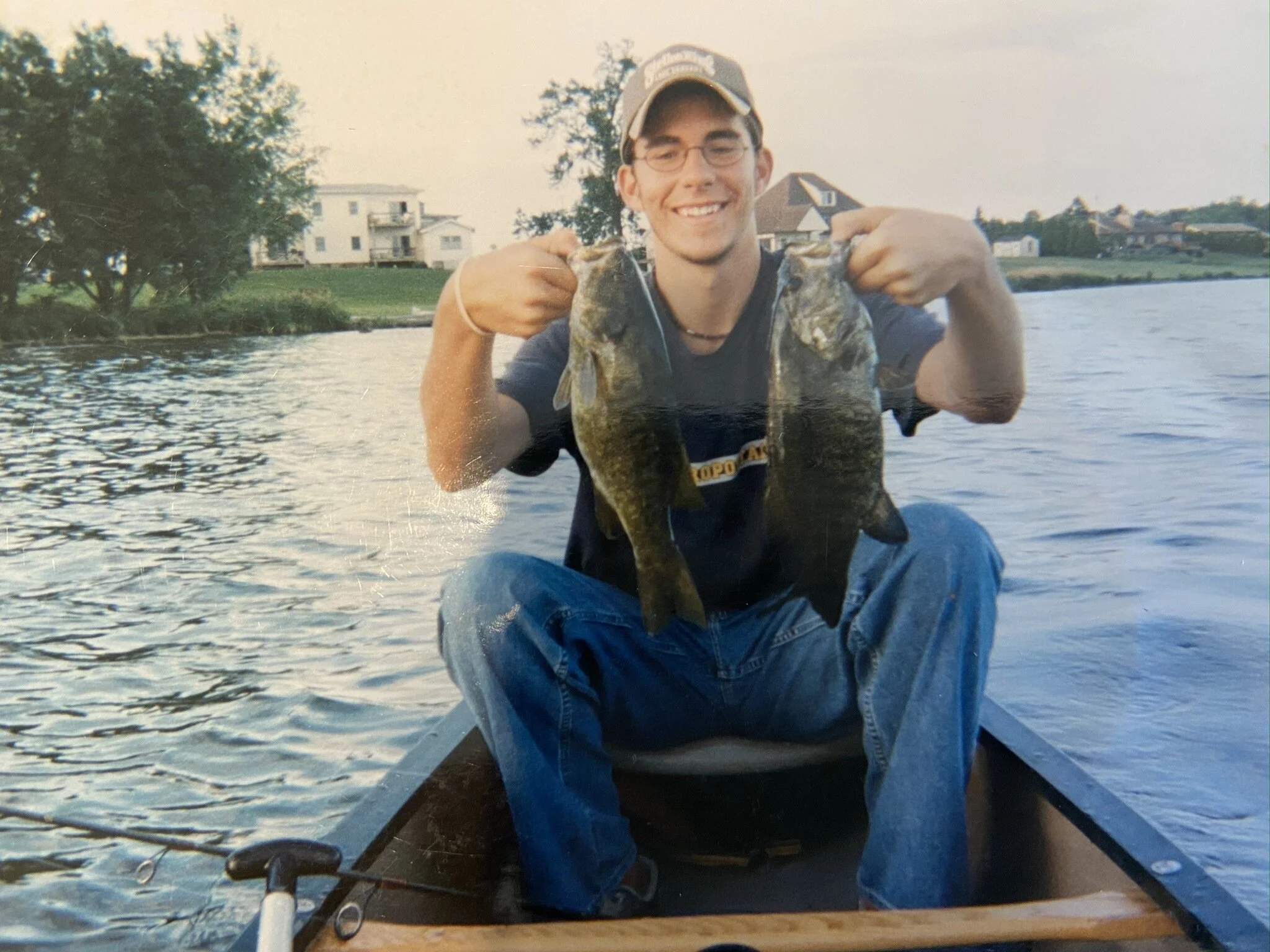Sanding a Pattern Down, Hand Crafting the Art of Consistently Catching a Limit of Bass.
I’ve noticed a pattern with my fishing style. Typically one that starts fast and then fine tunes. I’m very much a 60 grit fisherman(power fisherman) but I tend to let the fish talk me into 220 grit (finesse fishing) - Jim Fredenburg (friend and amazing angler)
I would argue that I have spent more time on the water with my dear friend Jim than all other people I have ever spent time on the water with….added together. We started fishing together as teenagers and continued on through our thirties. We have seen our personal bests in Small Mouth, Northern Pike and probably a few more that I'm missing. When we were young Jim always had a knack for boating the biggest fish of the day. By the time we walked back to the car on still wobbly sea legs he would have generally caught fewer fish but much bigger fish.
Time moved on and so did our lives. Jim made an amazing life for himself, I couldn’t be any happier or proud of a friend than I am of and for him. We still get together as often as possible to shoot a spinnerbait or nymph out there. We live in different states, so as does everything with aging, that has become harder.
A funny thing I noticed when Jim and I started fishing together again after a few years of not. He had converted to one heck of a limit fisherman. He could catch more fish and bigger fish than me. He had advanced. Years apart had been our Two roads diverged in a yellow wood. I had been in North Carolina, my fishing had gotten a bit of a Southern Drawl. Jim, staying in New York had really honed in on his way to catch fish consistently. We would go out together and he would promptly dismantle both the cover the fish were in and my ego. It was truly humbling.
Jim is also one of the handiest people I know, a true man's man. So, when I asked him for a top five or ten baits he goes to he instead gave me the apt comparison to starting any sort of finishing process and going down to the detail work. It is how he hand crafts a limit of fish.
1.Spinnerbaits( P60 grit)
Can be fished fast or slow.
Ability to cover a lot of water quickly.
2. Crankbait (80 grit)
The Ability to cover water in both span and depth.
You can feel your way through cover, structure and bottom composition.
3. Soft Plastic Jerkbait (120 grit)
Can be used to cover water BUT can be fished incredibly slowly.
4. Jigs/Tubes (180 grit)
When he’s found the fish or the pattern these baits tend to land bigger fish.
You can be more precise when fishing structure and cover with these baits.
5. Dropshot (220 grit)
When you dropshot correctly it can be fished fairly shallow to extremely deep.
This rig allows you to keep the bait in front of the fish for as long as it takes.
I know he left some of his favorites out of this list. One of those baits or patterns is frog fishing. Jim is an outstanding frog fisherman. I think this example is absent because Jim is a natural angler. Meaning when he sees the conditions that bring him to the path of throwing a frog he throws a frog. I know given a new body of water that he goes to this numbered sandpaper system to catch fish.
Let’s look at the system for what it is. It is personal. A soft plastic jerkbait is a great way to catch fish. If I were to make a sandpaper system there is no way that this bait would make my list. Yet, Jim knows what he is good at and comfortable with. If we look at it from an outside perspective it’s not just about the baits, it's about having a system. Jim can limit and cull because he has a system.
Our tool boxes both include spinnerbaits, crankbaits, jigs and dropshots in them, we even use them for the same jobs but my tool box leans heavily on a stickbait. The other thing I have seen Jim do exceedingly well is to progress through his system when striking out. Nothing on a spinnerbait, time for a crankbait and so on all the way to dropshot.
Remember that Bob Vila refinishes house differently than Richard Rawlings refinishes a car, their tool boxes differ greatly. We should all be looking at our fishing like Jim does, a system, a tool box. So, take a look at your box and decide on a system. Take your strengths and base the system on those, inject new techniques when opportunities present themselves. Find your P40 and your 220 but don’t forget that on occasion you need to have some wood putty or bondo. If you’re reading this I'm assuming your project has a frame and probably a body, now get to that finishing work.

